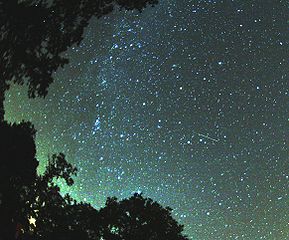 |
| Gliese 581g (Zarmina's World); artist's concept |
Gliese 581g, better known to this blogger and his readers as Zarmina's World, remains the centre of controversy. Earlier this month I posted about how the Goldilocks planet was gaining support. Astronomers Guillen Anglada-Escude and Rebekah Dawson agreed that the extant data supported the conclusions made by Dr. Steven S. Vogt and his colleague, Dr. R. Paul Butler. Likewise, the University of Puerto Rico, an accredited academic institution, has given support by default, by placing the planet at the top of the list of potentially habitable worlds (thus meaning it outranks every non-controversial exoplanet known to man). So it's not as if Drs. Vogt and Butler are simply digging their heels in the sand like stubborn mules. There are other authorities which lend support to the claim that the data we have concerning the Gliese 581 star system supports at least five planets, one of them being Zarmina's World. That should raise more eyebrows than it is.
Opponents of the claim have been very slow with their own counter-interpretations. Michael Mayor, famous for discovering the other planets of the system (as co-discoverer with Stephane Udry), contends that the data argues against the existence of Zarmina's World. Together with his team, Mayor re-analyzed the data, and stated plainly that the planet does not exist, although he waited a year to publish his paper. Mayor's claims have won over the majority of the scientific community, including one of Vogt's former students, Dr. Artie P. Hatzes, who said he was pained to see his former mentor clinging to conclusions that were, "obviously wrong." Another denier was Dr. Thierry Foreveille, who claims that his analysis of the data supports Mayor's: a system of four planets with elliptical orbits. However, Foreveille's data has not yet been published in a peer-reviewed journal. This prevented Dr. Vogt from publishing a response in most current and leading scientific journals.
 |
| Dr. Steven S. Vogt. Photo (c) LaurieHatch.com |
Despite the negative feedback and the slow responses of the deniers, Dr. Vogt and Dr. Butler have been stalwart. Vogt rejects the claims of Foreveille and says that such a system would be unstable. Circular orbits are a better match, and when the system is observed with this in mind, the data points clearly to the existence of a fifth planet. Even though most scientific journals won't accept Vogt's counter until Foreveille publishes his article in a peer-reviewed journal, there is one that will take Vogt's reply: the Astronomische Nachrichten, which just happens to be one of the oldest scientific journals in the world. They have accepted his article and published it. Foreveille was quick to respond that elliptical orbits for the Gliese system are in fact stable, and that Vogt's paper is wrong. He says the probability that Vogt's planet is a "false alarm" (the term used for false planetary detections) has risen to 4%, which is apparently a bad sign. Dr. Greg Laughlin of the University of California, Santa Cruz, raises the estimate to 12%. But let's think about that math for a minute. Even if Laughlin is correct, that still means Vogt has an 88% chance of being right. While that may not be enough to speak with certainty as to the planet's existence it is also a far cry from dismissal. To his credit, Laughlin is being a fair scientist. For Mayor and Foreveille, the non-existence of Zarmina's World is a foregone conclusion. Laughlin, however, admits that Vogt has "a decent shot" of being correct, and further adds that, "[I]t is likely that if the peak holds up as more data comes in, the planetary explanation is likely to be correct." For that I give props to Dr. Laughlin. He is telling it like it is. Vogt is confident is his data, and I am confident in him. But, like Dr. Laughlin, we must be honest. It's not an indisputable fact just yet. The odds are definitely in favour of Zarmina's World existing, but we don't know for sure just yet. Only time will tell. But I would not be surprised in the least if in the next year or two we hear that Zarmina's World has been confirmed.
(all quotations and details taken from a New York Times article
http://www.nytimes.com/2012/08/21/science/space/just-right-or-nonexistent-dispute-over-goldilocks-planet-gliese-581g.html ; All other material is the opinion of the author of this blog)



